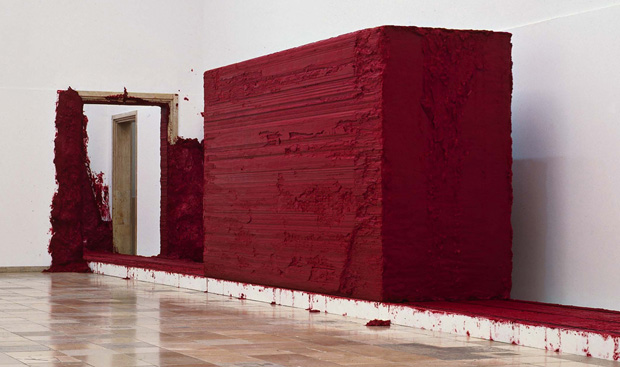
Self Generated Art
Behind the scenes at The Art Museum
Some of our favourite pieces at Frieze this week have been the conceptual ones so it strikes us as really odd that conceptual art still gets a bad rep for not always being made solely by the artist in person, but by machines, collaborators and workshops - and, in the case of the Anish Kapoor above, the doorways of the gallery. “Where’s the artistic skill in that?” some still cry, looking at Damien Hirst’s formaldehyde tanks or Kapoor’s colossal architectural constructions. “Where’s the authenticity?”

Damien Hirst, Gelsemine (2006)
But it's worth remembering, the whole idea of artistic authenticity is an invention of the last 200 years. Before then, artists weren’t treated as creative visionaries. They were craftsmen, hired to execute a particular job, and nothing more. The big names of the Renaissance – Masaccio, Raphael, Botticelli – all ran large workshops full of apprentices, who collaborated to churn out works at high speeds for hungry patrons. The artist himself (especially as their reputation grew) would act in a more managerial role, designing the piece in rough and then slapping their name on the finished product, much like a James Patterson book today. More discerning patrons would (for additional cost) demand that the artist execute the most important parts of the piece, such as the faces; and today, art historians entertain themselves for hours by arguing which parts of a painting were painted by whom (The Ghent Altarpiece, featured in Phaidon's new book, _The Art Museum _is a famous example). To add to the drama, certain famous artists, known to be apprenticed during their early lives, are speculated to have painted certain parts of their masters’ works.
But in case this news comes as a shock, don’t worry; there are some well-known exceptions. Da Vinci, despite having a large and bustling workshop, was notorious for personally obsessing over every one of his commissions. For example, he spent 16 years painting the Mona Lisa, a portrait commissioned by the Giacondo family. Twelve of those years were spent working on the lips. X-ray analysis reveals three earlier attempts at the portrait existing under the finished one. During this time, Da Vinci emigrated to France, taking the canvas with him and ensuring that the Giacondo family never got to see the painting again.